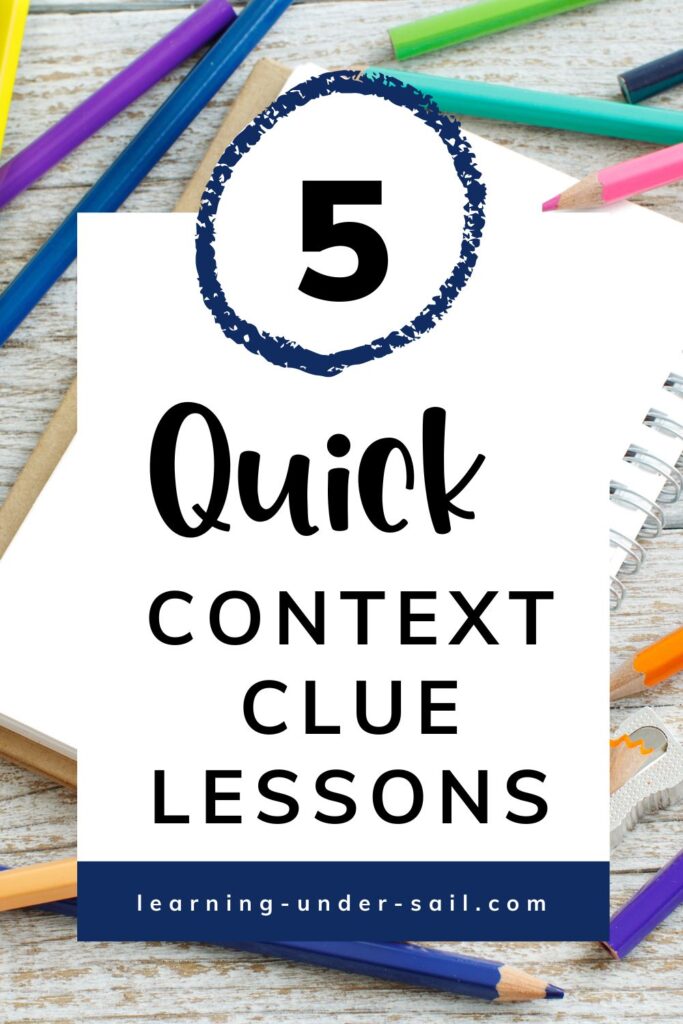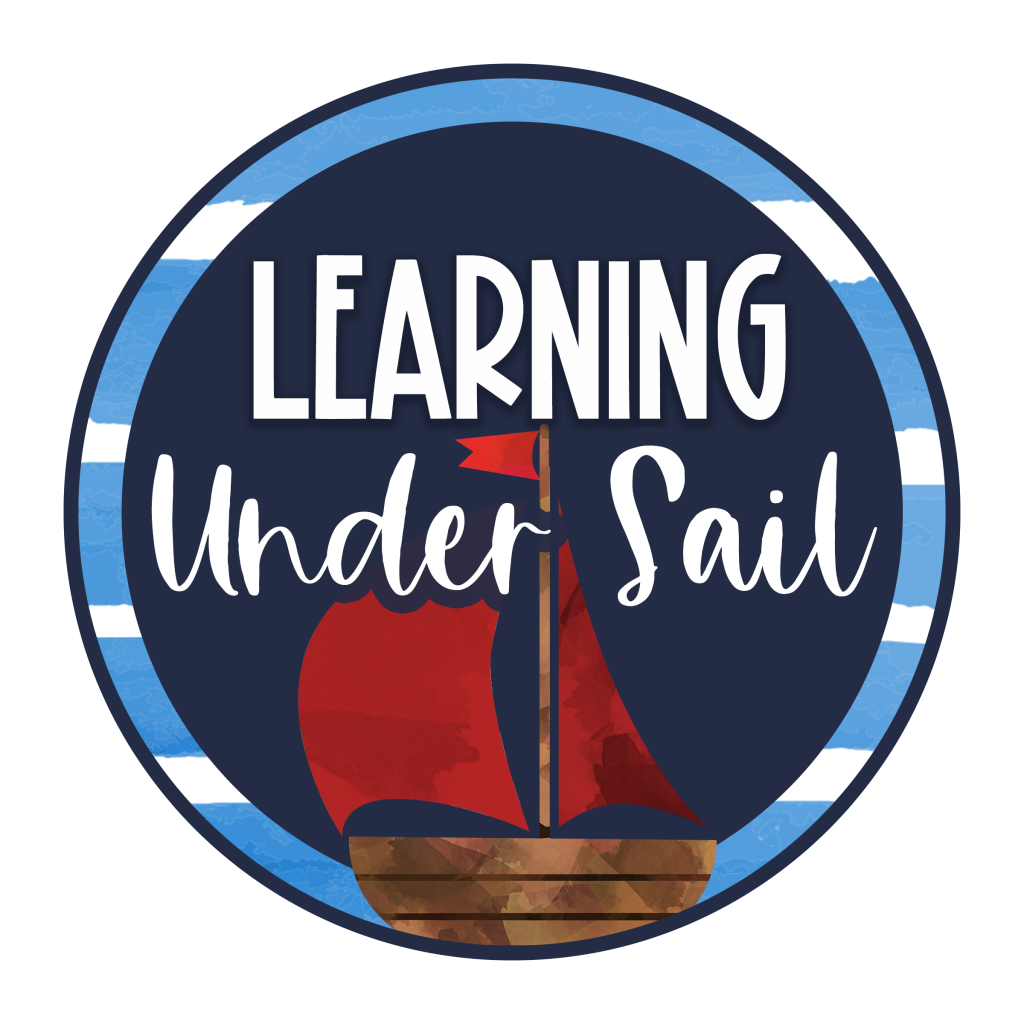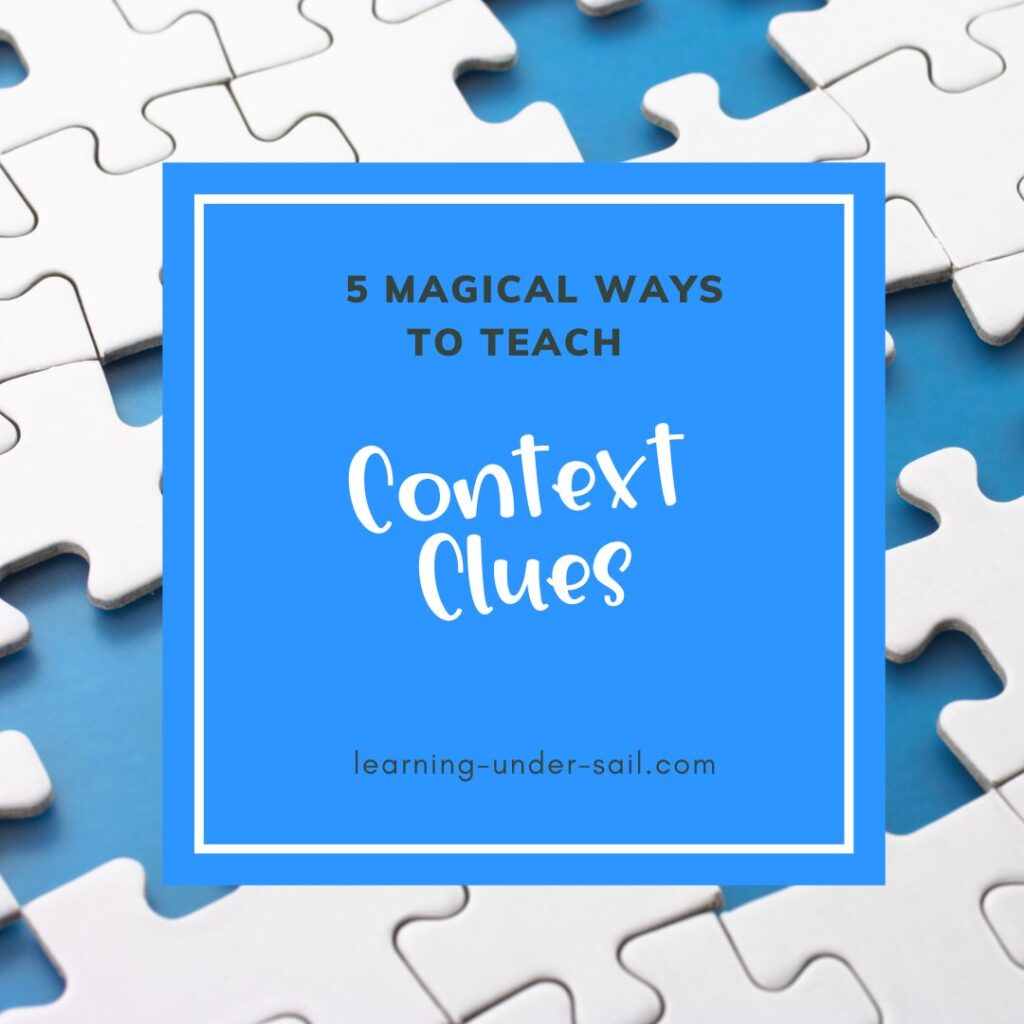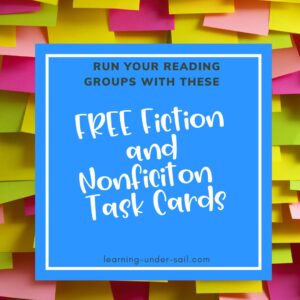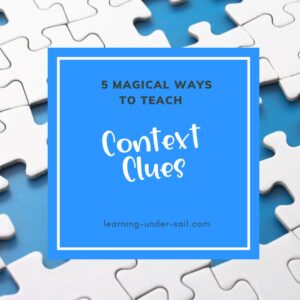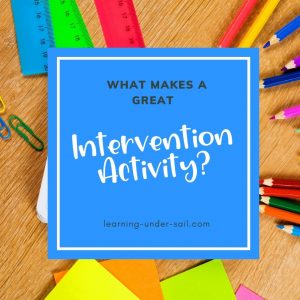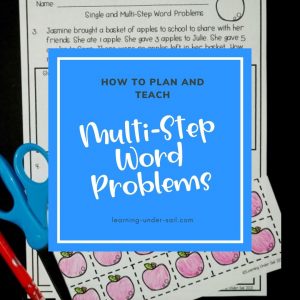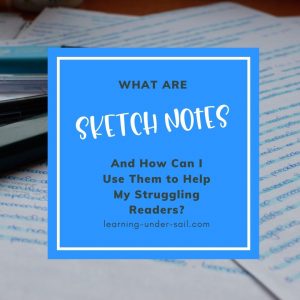Use this quick-win context clue lesson to help your students see an immediate improvement in their reading. It doesn’t take long to teach context clues. You can add a brief activity to an already-established lesson or really dig in for a week to teach context clue mastery.
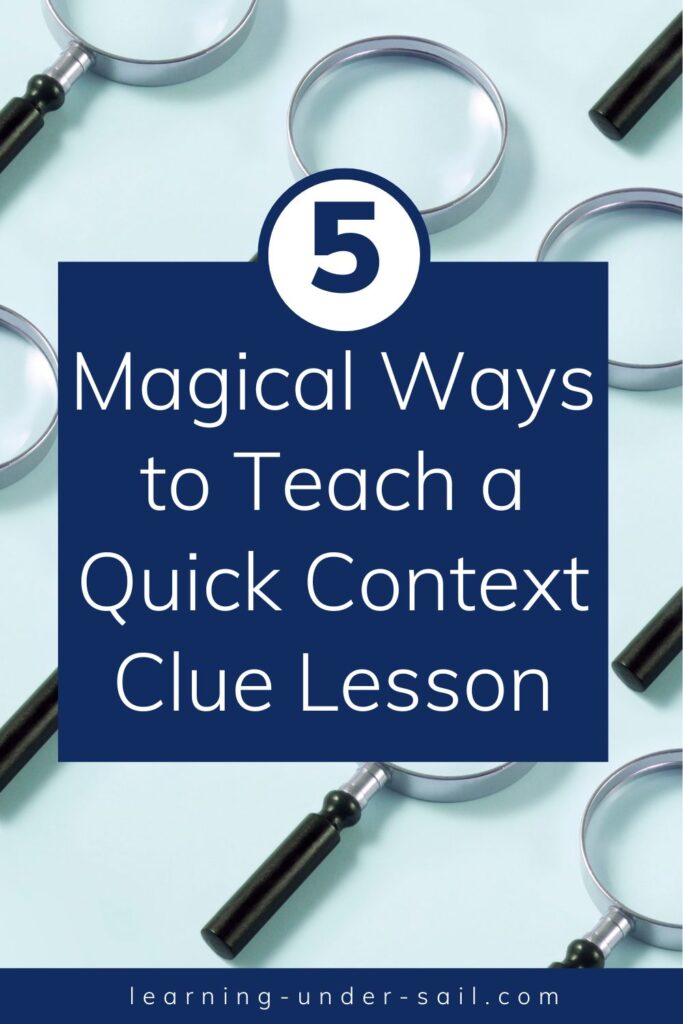
Teaching context clues is a high-yield, “bang for your buck,” worth-your-time strategy. Spending time teaching how to use context clues will help your students become better readers.
Here are five ways to add a context clue lesson to your small reading groups each week.
1. Explicitly teach the five types of context clues.
There are five types of context clues. Knowing the types of context clues helps students recognize the clues as they are reading.
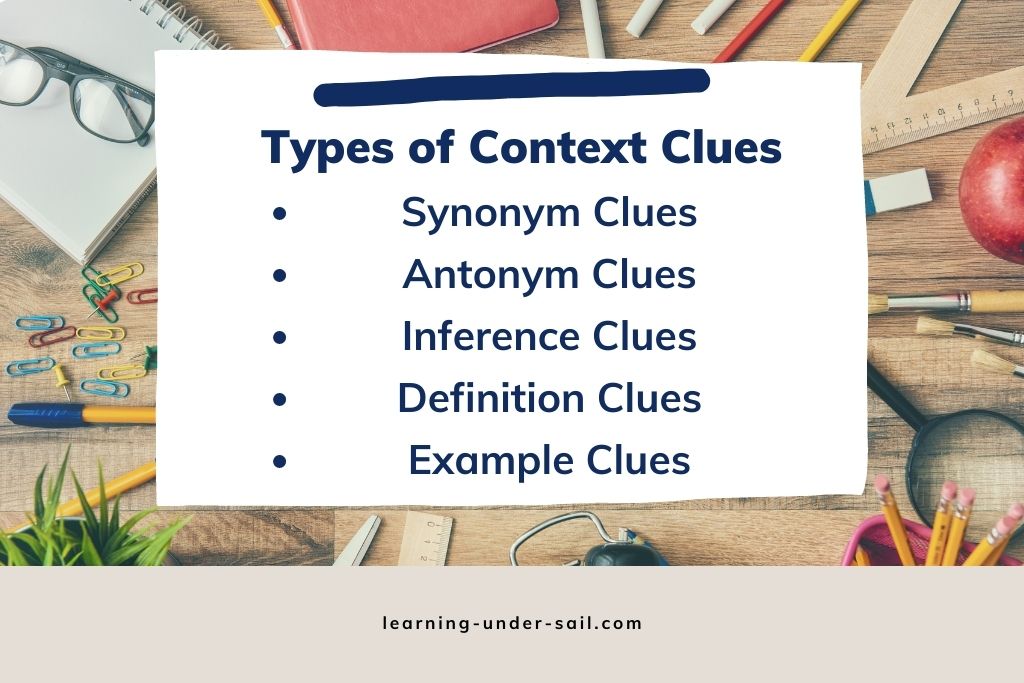
Synonym Context Clues – The author includes a synonym for a tricky word in the sentence.
Antonym Context Clues – Look for an antonym, or word that means the opposite of the tricky word in the sentence. Antonym clues often use signal words such as, “however, but, unlike, and compared to.”
Example Context Clues – These clues are a list of words, often divided by commas. The list fits into a category, and the category is the meaning of the tricky word.
Definition Context Cues – We often find these clues in our science and social studies texts. The definition of the tricky word is directly given in the sentence and it is often signaled by a comma.
Inference Context Clues – When we use inference clues, we take what we know, combine it with what the author tells us in the sentence, and figure out the meaning of the word.
Introduce one type of clue each day of the week and make an anchor chart. Then, add a quick activity to your daily reading lessons to practice using the different types of context clues.
2. Use minilessons to practice using context clues.
Here are three quick context clue lesson ideas to add to your small reading groups:
- As you introduce a new text, choose a word you think students might not know. Write a sentence using that word and your choice of context clue to introduce the word to the group. Then, have the students preread the word’s sentence in the text and discuss the word’s meaning.
- After you have introduced the different types of context clues. Have students hunt for context clues as they read. You may have to cue them to reread a paragraph and look for a clue or a tricky word. Next, add the word in its sentence to an anchor chart.
- Add a context clue activity, such as task cards, a game, or this context clue lesson and activities to your small group. If your students practice a little each day, they become context clue masters!
3. Model how to use a context clue from the students’ science or social studies textbook
Context clues are used throughout nonfiction text, so take advantage of text your class already has to read. Be sure to bring students’ attention to context clues as you are reading text from science or social studies so they can see how to apply context clues as they read.
4. Increase vocabulary by using word walls.
Developing vocabulary is a long game. Be sure that you have a way to display words that you and your students can refer to often. Anchor charts, word walls, and student-created lists are great ways to record vocabulary words across the curriculum. Students will read the room naturally, so take advantage of their curiosity!
5. Play hot seat
Hot Seat is a quick, low-prep game that can be played with the whole class, a small group, or even partners.
To begin, the teacher selects a word that students are familiar with. Words can come from content vocabulary, vocabulary words in reading texts, or lists of character traits.
Write the word on a whiteboard or paper. Stand behind the student and hold the word over his or her head. The other students give the student in the “hot seat” clues to the word. I usually only allow them to give meaning clues, not letters to the word.
This game can be played with the whole class or a small group. You can even add this to a workstation. To add to a workstation, give students a list of words and have them write clues that they could give if they were playing hot seat. I’ve seen students play the game with a partner, then write down the clue. Of course, the clues given can be compared to how we use context clues.
Bonus Idea!
Have a scavenger hunt. If you have noticed that the text you just read as a class had a context clue, have students revisit that clue at the end of the reading.
Give students Post-it notes and have them hunt to find the context clue in a passage. First, students write down the word and clue, then the class can record the idea on an anchor chart.
Students can also hunt for context clues in their independent reading, but not all text will lend itself to this activity. You may need to preview some text and set your students up for success with text that clearly uses context clues.
Intervention Context Clue Lesson Example:
Here’s a sample of what a week of context clue lessons might look like.
Materials:
Context Clue PowerPoint Lesson
Context Clue Intervention Lessons and Activities
Context Clue Worksheets and Activities
Context Clue Lesson Plan Day 1:
Lesson: Play, “What am I?” to get students thinking about using clues to figure out words. Use the Context Clue notes from the Context Clue Intervention Lessons and Activities and/or the Context Clue PowerPoint Lesson to introduce definition clues.
Activity: Practice identifying definition clues and meanings of words with the Circle the Meaning worksheet from Context Clue Intervention Lessons and Activities. Wrap up the lesson with a few context clue task cards from Context Clues Worksheets and Activities.
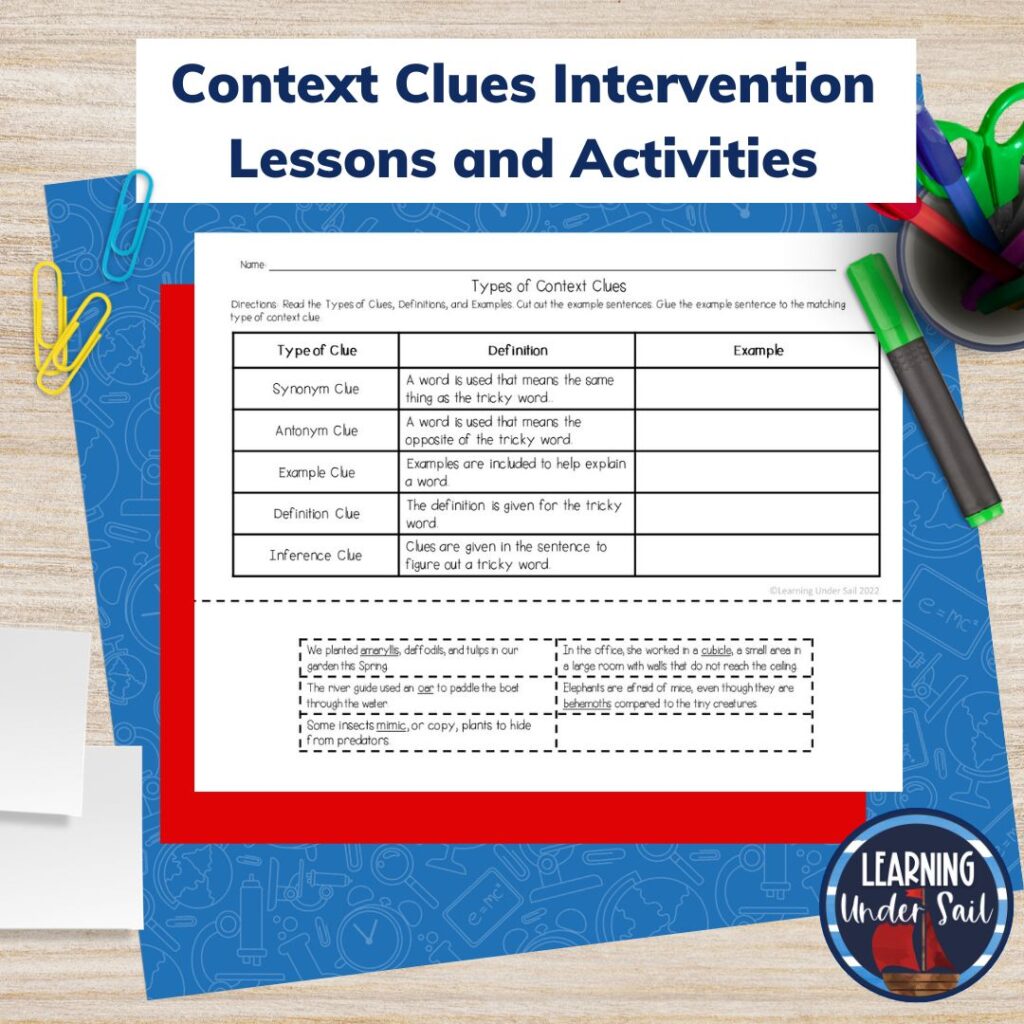
Context Clue Lesson Plan Day 2:
Lesson: Play, “What am I?” How is this game like using context clues as we read? Use the Context Clue notes from the Context Clue Intervention Lesson and Activities and/or the Context Clue PowerPoint Lesson to introduce synonym and antonym clues.
Activity: Practice identifying synonym and antonym clues and meanings of words with the Circle the Meaning worksheet from Context Clue Intervention Lesson and Activities. Students independently practice using context clues with the cloze sentences from Context Clue Worksheets and Activities.
Context Clue Lesson Plan Day 3:
Lesson: Warm up with a game of, “What am I?” Use the Context Clue notes from the Context Clue Intervention Lesson and Activities and/or the Context Clue PowerPoint Lesson to introduce example clues.
Activity: Practice identifying example clues and meanings of words with the Circle the Meaning worksheet from Context Clue Intervention Lesson and Activities. Students independently practice reading a short passage, defining words, and coloring the context clues with a worksheet from Context Clue Worksheets and Activities.
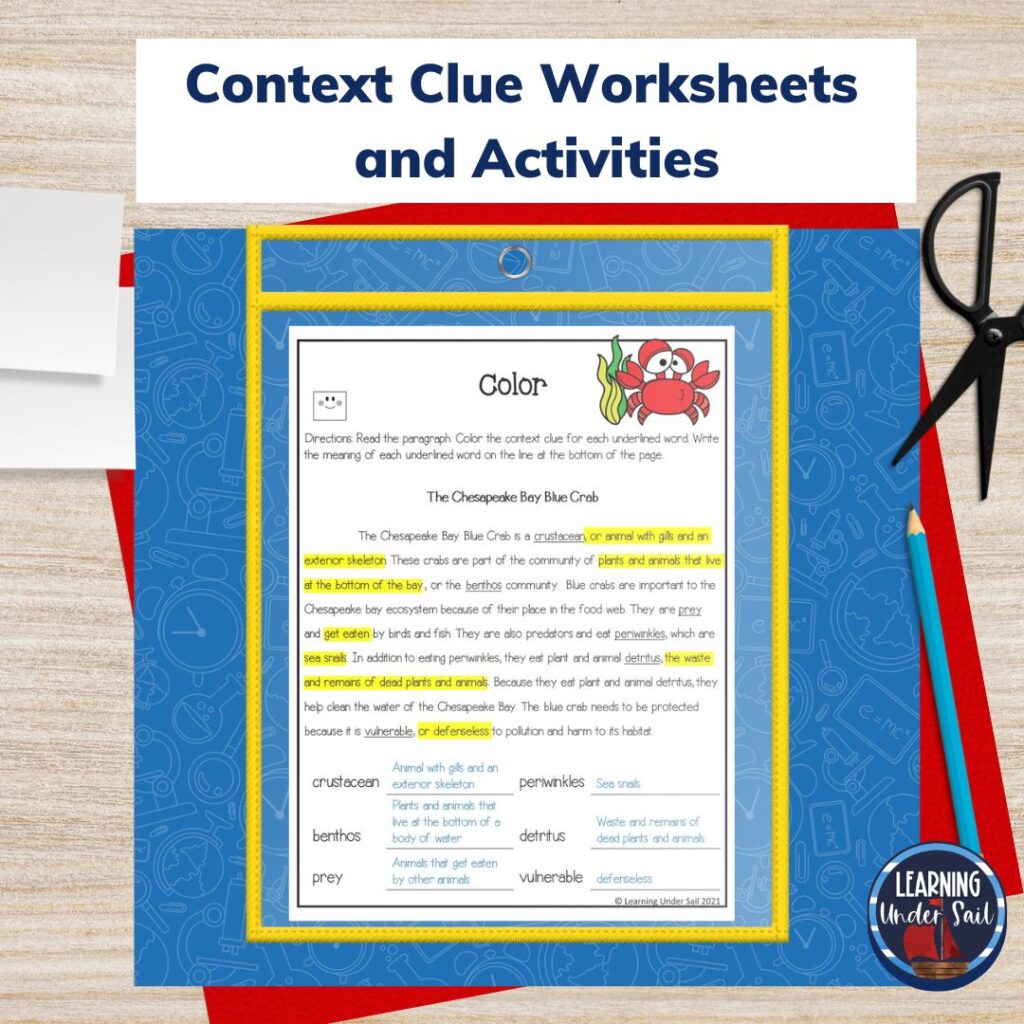
Context Clue Lesson Plan Day 4:
Lesson: Warm up with a game of, “What am I?” Use the Context Clue notes from the Context Clue Intervention Lesson and Activities and/or the Context Clue PowerPoint Lesson to introduce inference clues.
Activity: Practice identifying inference clues and meanings of words with the Circle the Meaning worksheet from Context Clue Intervention Lesson and Activities. Students independently practice reading sentences, defining words, and identifying the context clues with a worksheet from Context Clue Worksheets and Activities.
Context Clue Activities for Day 5 and Beyond:
- Review with the cut-and-paste notes chart from Context Clue Intervention Lessons and Activities.
- Identify meanings of words and context clues with mixed review from Context Clue Intervention Lessons and Activities.
- Practice using context clues with the puzzle cards from Context Clue Worksheets and Activities.
- Play Context Clue BINGO.
- Use Context Clue Crossword Puzzles to practice using context clues.
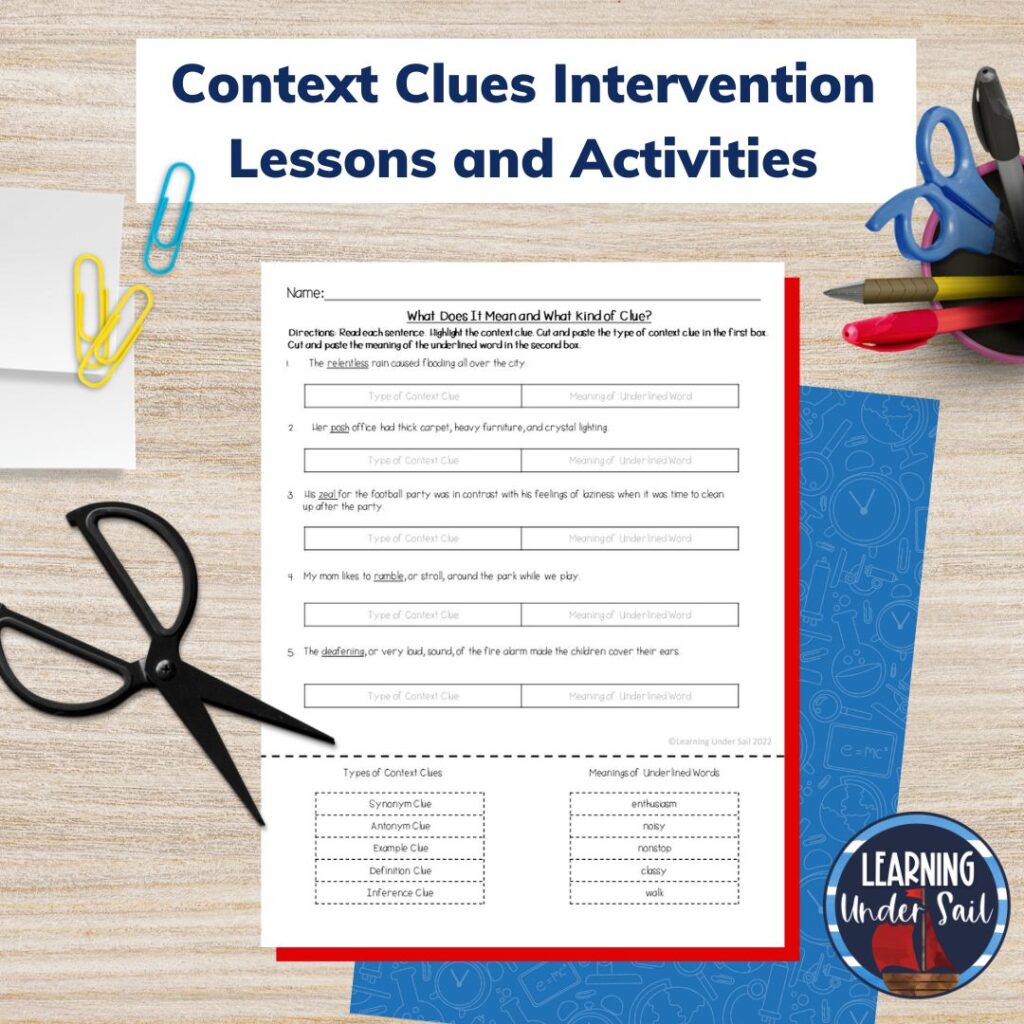
You can find all of my Context Clue Resources in my TPT store here.
Feeling like you don’t have time to play games in your classroom? Check out this blog post about Why Upper Elementary Struggling Readers Need to Play Games.
Need a few more simple strategies for teaching context clues? Check out this blog post: Teaching Context Clues: Simple Strategies that Work.
Here’s another related blog post: Teaching Context Clues in 3 Easy Steps.
What’s your biggest intervention challenge? I’d love to hear from you!
